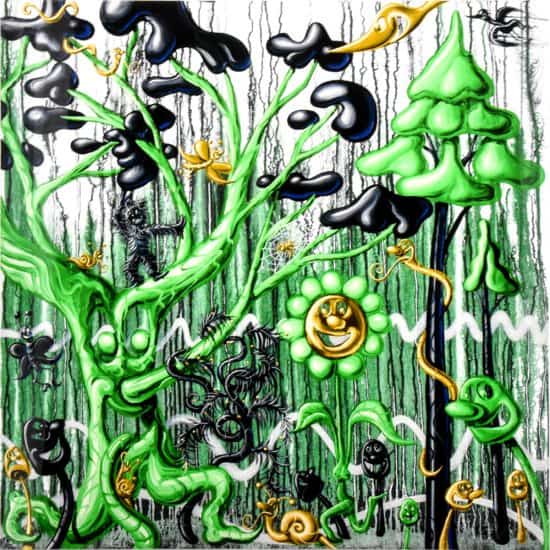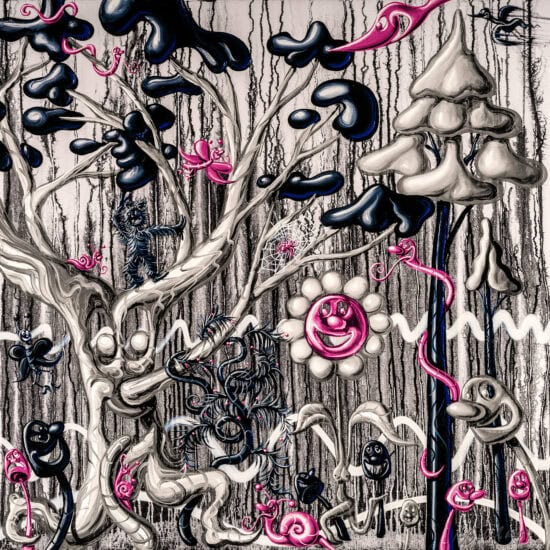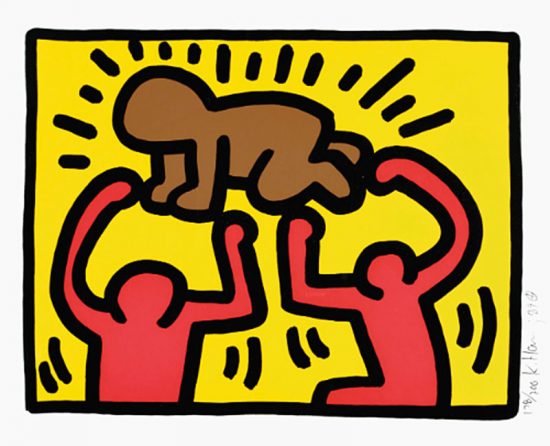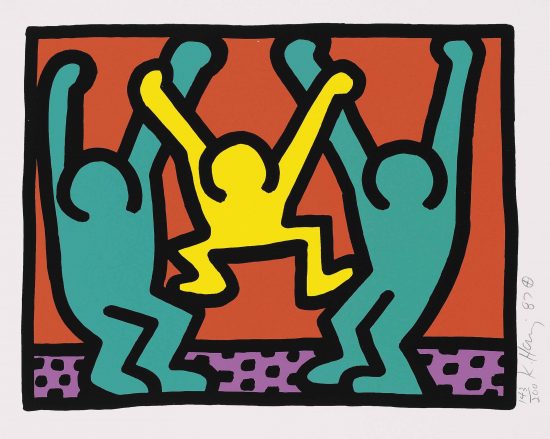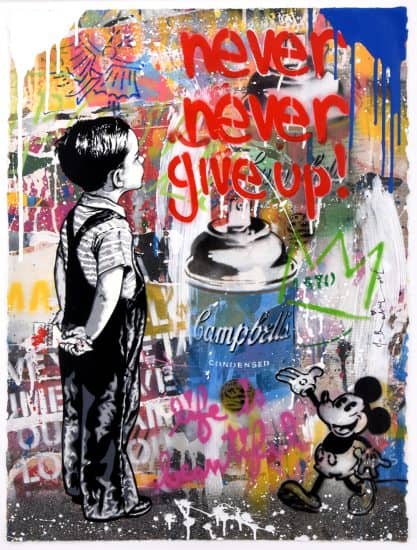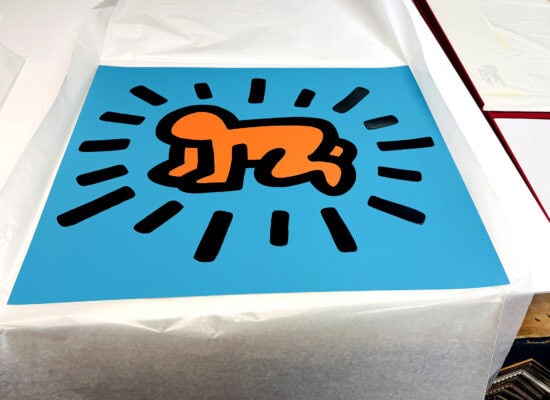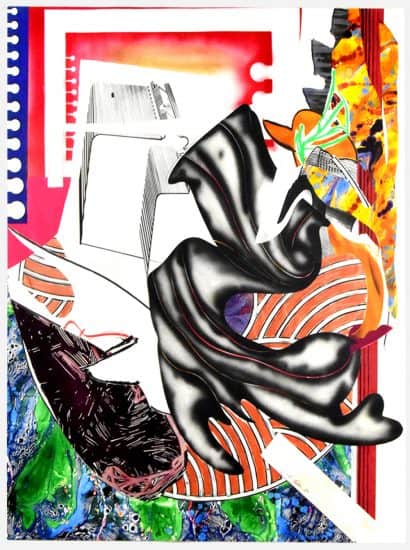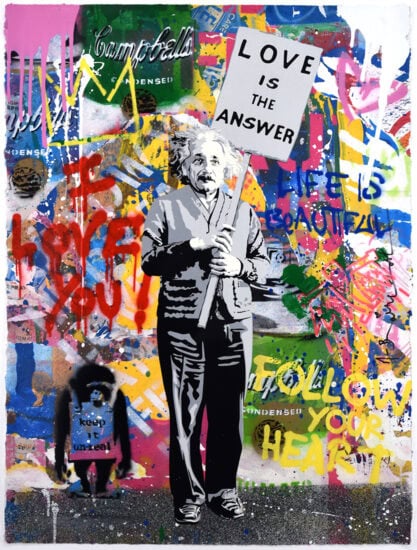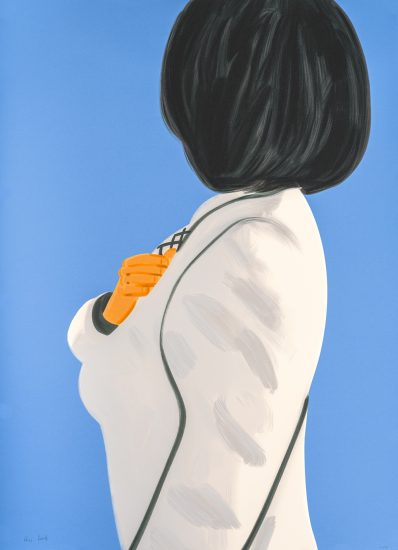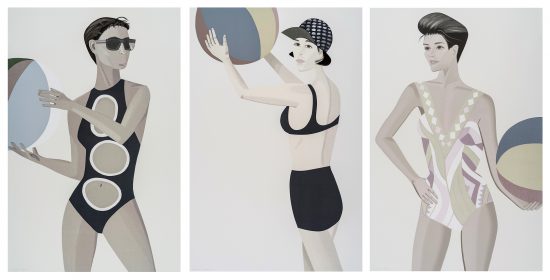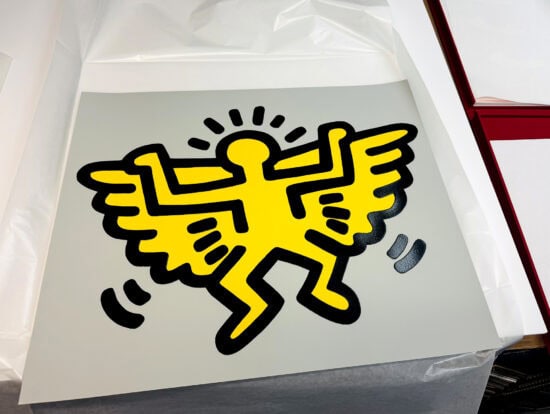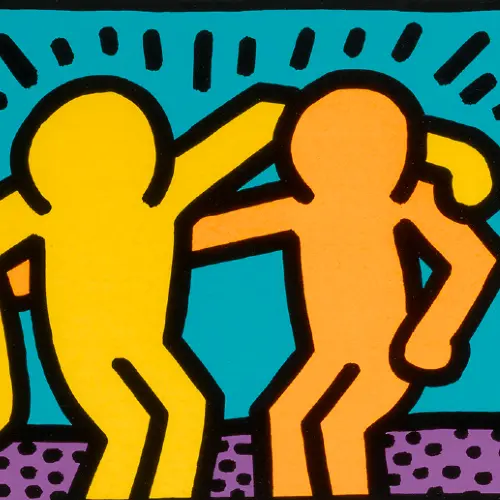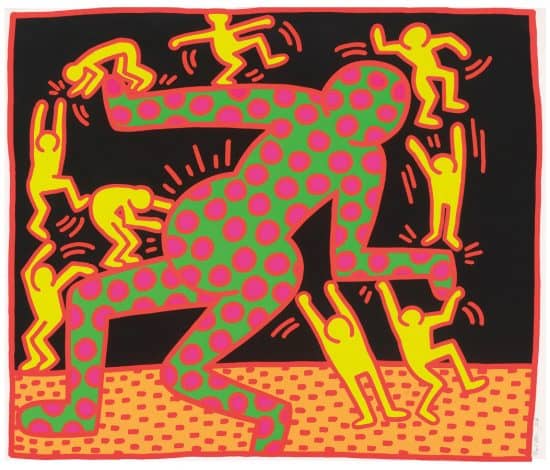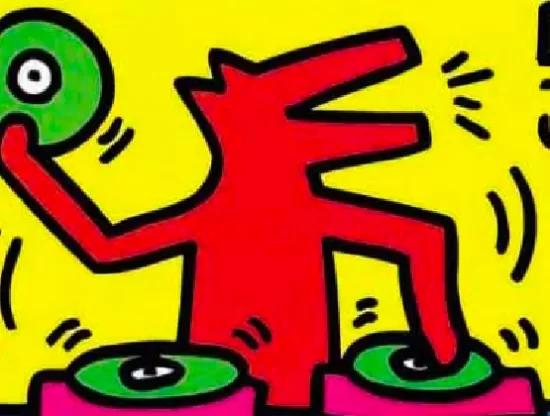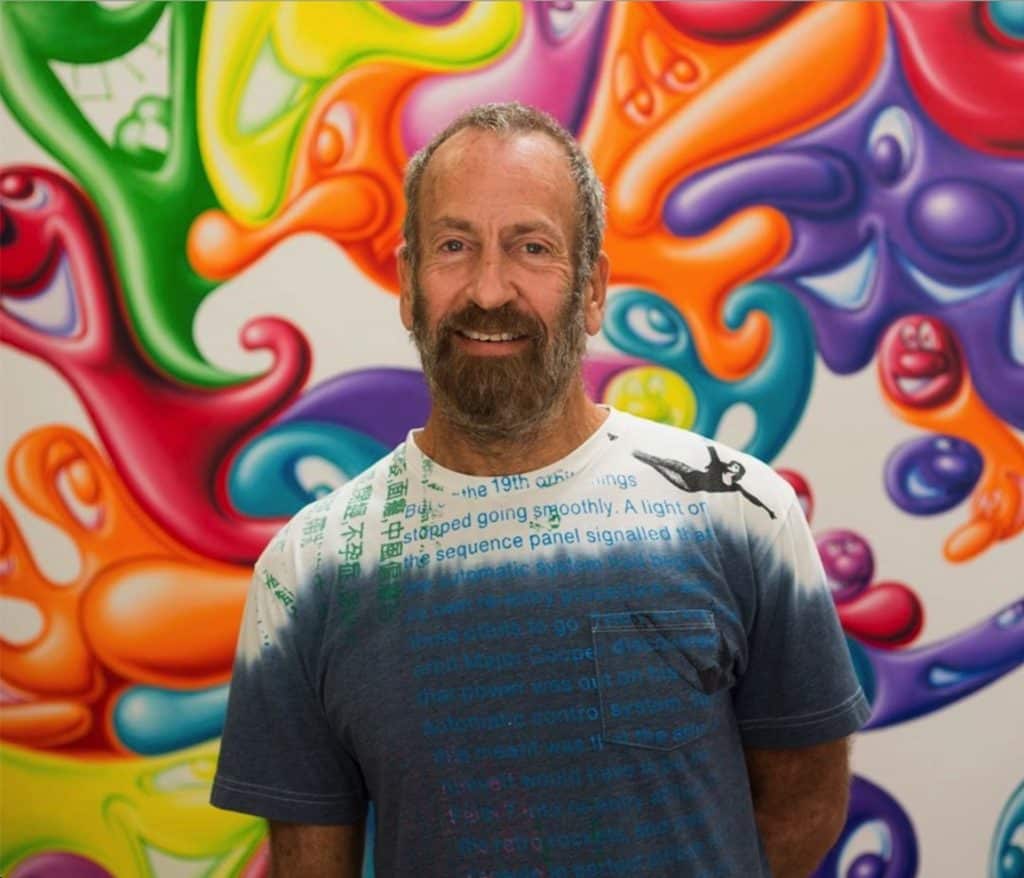Keith Haring Dancing Figures: Dancing Man, Dancing Dogs
Keith Haring’s simplistic yet iconic and notably recognizable figures are images that are designed to engage the viewer with semi-hieroglyphic motifs through Haring’s specific visual language.
One of the many symbols Keith Haring has ingrained in his works are dancing figures. Typically considered to reflect the artists love for hip hop as it was emerging into the New York club scene and in particular, the gay scene of the ‘70s and ‘80s. The bold gestural double lines that typically surround his figures have come to symbolize freedom and ecstasy, occasionally appearing in multiples either holding hands or stacked together, creating an air of solidarity and community. These are not the only meanings behind Haring's dancing figures; they were also meant to evoke fun and joy within the community, an attempt to radiate positive energy.
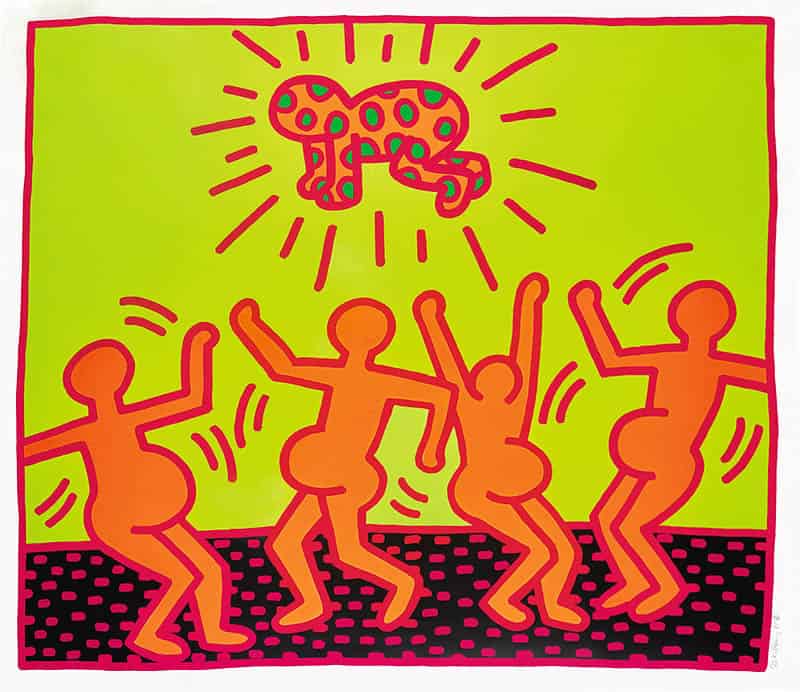
His art was rising to prominence around this time, and it has been noted that Haring would often listen to rap while painting, finding inspiration in the movements and energy that came forth.
He used to paint one stroke at a time to the rhythm of whatever he was listening to.
Fellow artist and friend Kenny Scharf recalled about his friend, Keith Haring.
Trying to match that energy and the movement of music, Haring would create contorted figures that could backend and more to replicate the movements of break dancers in action.
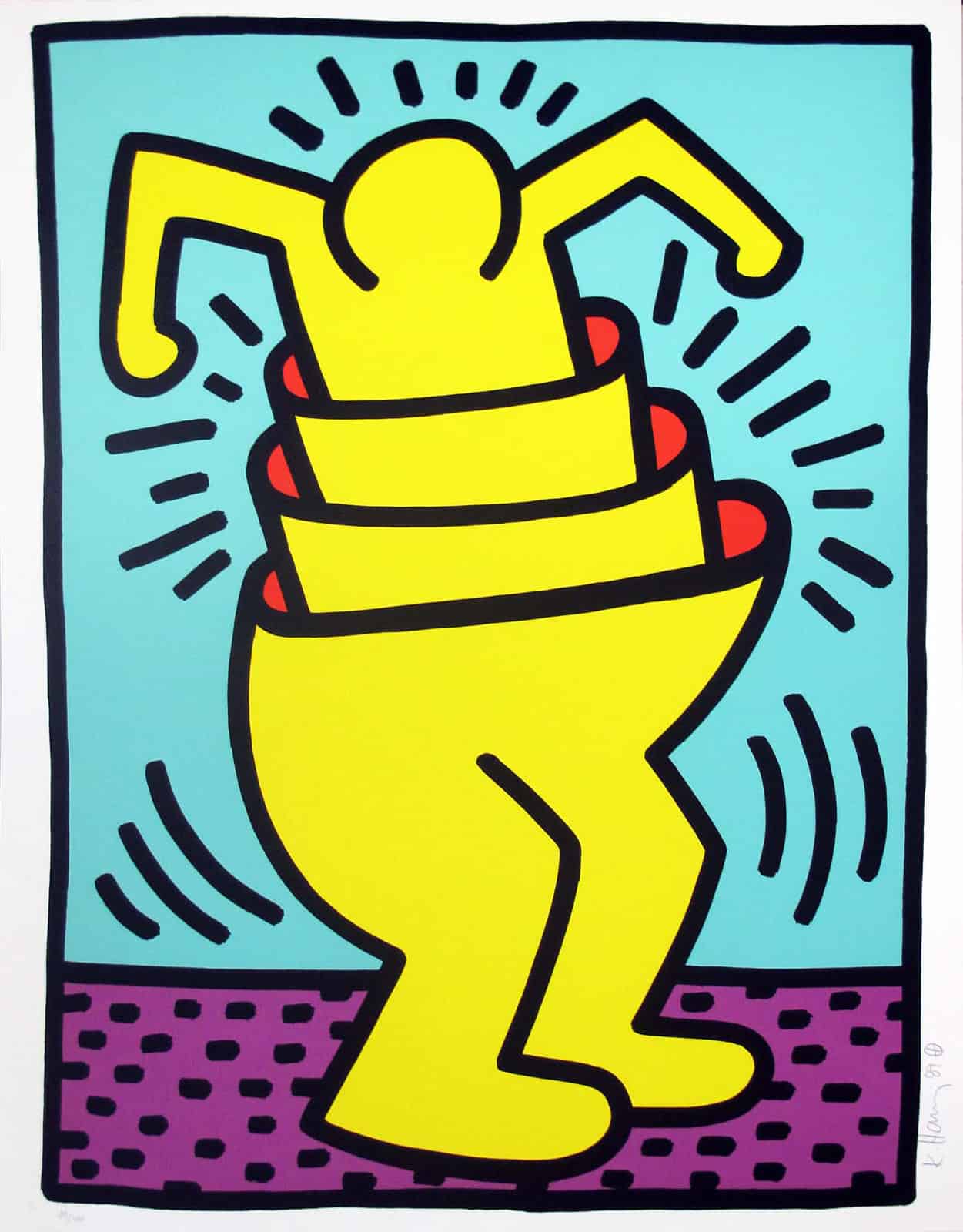
Keith Haring’s Dogs, depending on your view on themes of death, does not match the energy that life brings to us and instead subverts back to the imagery of ancient Egypt and the importance of their polytheistic Gods in the form of hieroglyphs. Dogs in Haring’s works typically illustrate the abuses of power through politics and questions ultimate obedience; however Dancing Dogs maintains a separate meaning. Recalling the ancient Egyptian God Anubis, a dog like God who watched over the dead, Haring incorporates these themes of Anubis and Death into his works by also portraying the dogs handling human-esque forms. It has also been related to the allegorical Christian notion of ‘The Dance of Death’, a literary or pictorial representation of a procession or dance of both living and dead figures, the living arranged in order of their rank, from pope and emperor to child, clerk, and hermit, and the dead leading them to the grave.
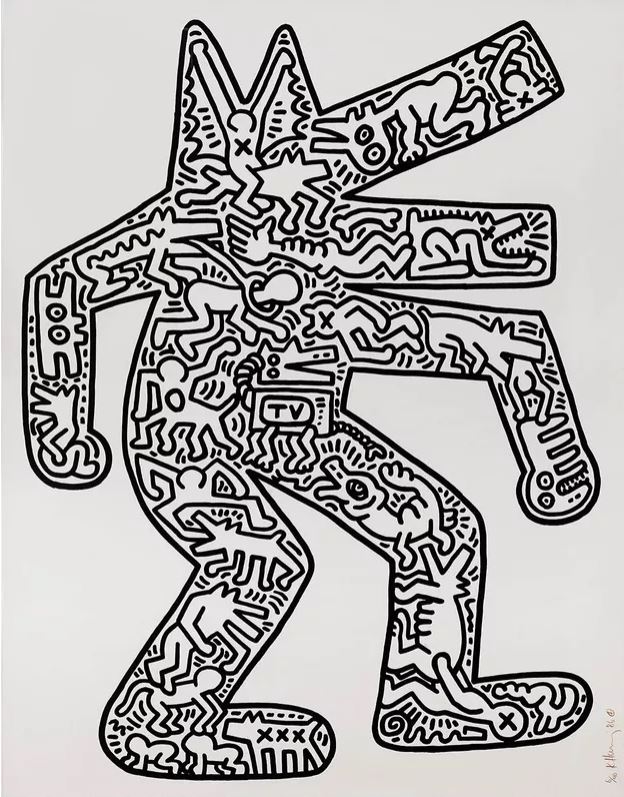
Dogs in Haring’s works continue to be representatives of humans and animals, continuously used through his career to explore semiotics and the changing nature of meaning in language. Matching ‘Dogs’ together or pairing them with other motifs from his repertoire, ‘in different combinations they were about the difference between human power and the power of animal instinct’, nonetheless always discussing greater issues of contemporary society.
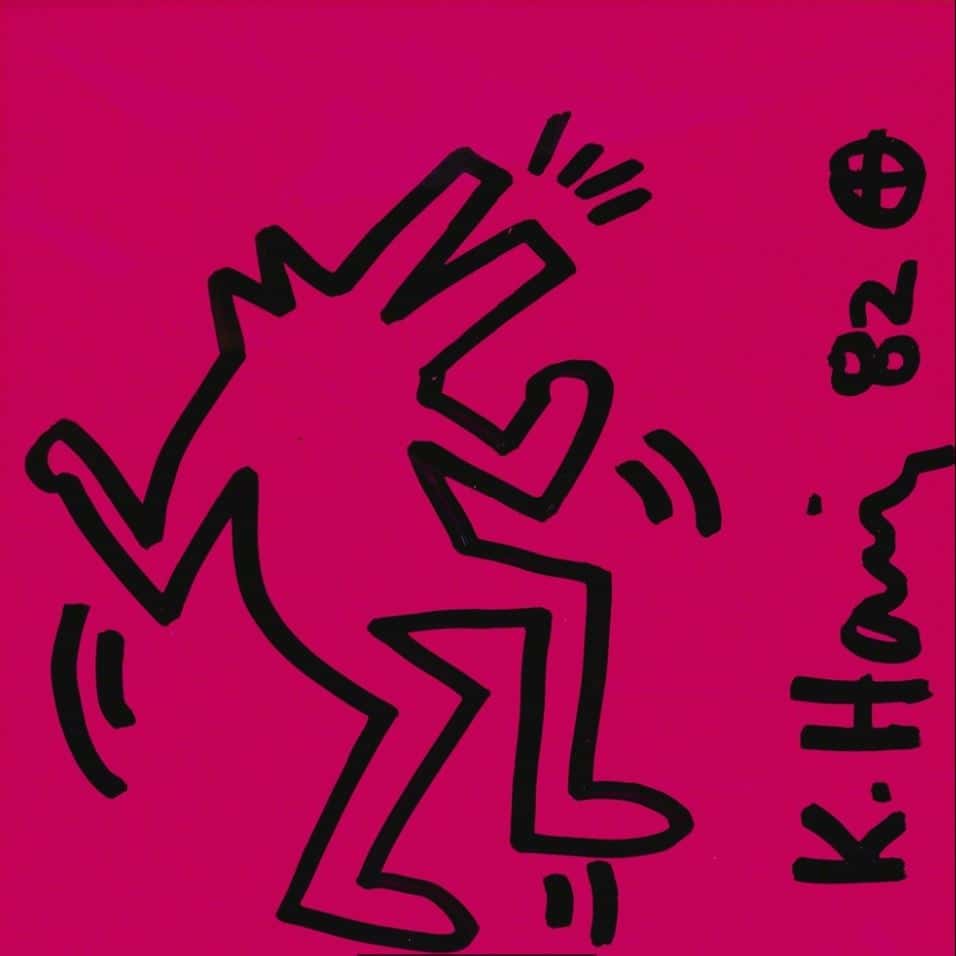
Haring once said ‘drawings don’t try to imitate life; they try to create life, to invent life’ - an ethos that very much captured the essence of his dancers.
What is the Keith Haring Dancing Men?
The Dancing Men in Keith Haring's work are simplistic figures that are always drawn in movement. They can be seen in prints dancing either solo or in multiples, stacked on top of each other, holding hands, or interreacting with other motifs in the work.
What is the Keith Haring Dancing Men represent?
The dancing men were made in order to evoke fun and joy, along with solidarity within the community.
Is the Dancing Men a Keith Haring motif?
Yes; The dancing men can be seen in many of Haring's works, such as in the Fertility Suite, within the different Pop Shops, and more.

